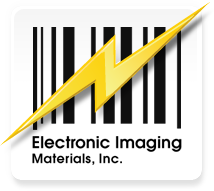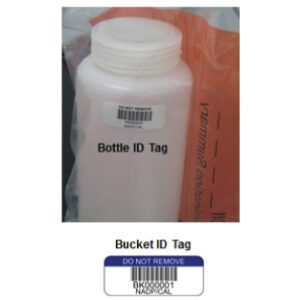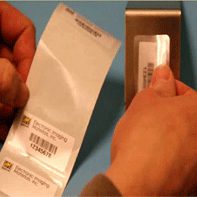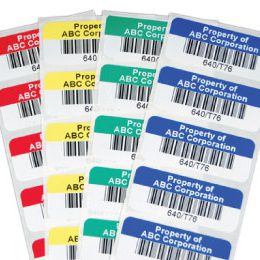As devices get smaller, smarter, and subject to tighter regulations, the way we print their labels is evolving just as quickly. If you’re still relying on outdated equipment or off-the-shelf print processes, you are falling behind. That gap can cost you in compliance, durability, and label quality.
Medical device label printing is undergoing a transformation. Understanding what’s changing and why can help you protect your operational timeline, improve traceability, and keep your products audit-ready.
Let’s explore the innovations shaping the future of medical device label printing and how they affect everything from production efficiency to regulatory alignment.

Digital Printing for Medical Labels
Digital printing has quickly become a preferred method for medical device label printing. As labeling requirements become more complex and product lines expand, this technology offers the flexibility, accuracy, and consistency that traditional methods struggle to match.
Faster Turnaround With Minimal Setup
Digital printing eliminates the need for plates or long setup processes, reducing lead times significantly. Manufacturers can move directly from approved design files into production without delays. That speed is especially valuable for teams managing frequent label revisions or launching new SKUs.
Superior Print Resolution for Complex Labeling
Digital presses produce crisp, high-resolution images that make even small barcodes and UDI symbols clean and legible. This is critical for maintaining scan accuracy and clarity on compact label footprints, particularly when space is limited but regulatory data is non-negotiable.
Built-In Support for Variable Data
Every device label may need a unique serial number, expiration date, or lot code. Digital printing handles variable data with ease, printing one-of-a-kind labels within a single run without slowing down the process. That kind of flexibility is ideal for serialized products and short runs.
A Smart Fit for Hybrid Labeling Workflows
Digital printing integrates well into hybrid workflows. Many manufacturers use preprinted labels for static elements like branding or logos, then print the variable data themselves via thermal transfer. This system reduces inventory waste, supports last-minute changes, and aligns labeling with real-time production schedules.
Advances in Thermal Transfer Printing Labels for Compliance and Durability
Thermal transfer printing remains a workhorse in the medical label world. It offers excellent durability, clarity, and reliability. New developments in this space have made it even more effective for regulated environments.
Modern Ribbons and Substrates Boost Resistance
Advancements in ribbon chemistry now allow labels to withstand chemical exposure, high heat, and sterilization processes without fading or smudging. When combined with the right label material, thermal transfer printing produces medical labels that hold up through every stage of use.
Printheads That Last Longer
Improvements in printhead design mean fewer replacements, less downtime, and lower long-term maintenance costs. For high-volume operations, these upgrades translate to smoother workflows and better cost control.
Better Clarity for UDI and Barcode Compliance
New thermal transfer printers deliver sharper contrast and better definition for barcodes and variable data. This helps ensure consistent readability for 2D codes, UDI formats, and batch numbers, even after repeated handling or sterilization.
Thermal transfer printing labels remain a reliable choice when long-lasting, scannable, and compliant output is essential. It supports FDA and international requirements with minimal manual oversight.
UV-Curable Inks for Extreme Conditions
When durability is a must and labels are exposed to tough conditions, UV-curable ink technologies offer a high-performance solution.
Instant Curing Speeds Up Production
These inks dry immediately under UV light, enabling fast production without smearing or set time delays. This makes them well-suited for high-speed operations and helps reduce errors due to premature handling.
Resistance to Harsh Chemicals
UV-cured inks resist solvents such as ethanol, xylene, and acetone. This is especially useful in laboratory, surgical, and pharmaceutical applications where chemical exposure is routine.
Strong Adhesion Across Substrates
UV inks bond well to difficult surfaces like coated films, foils, and treated plastics. This ensures long-term label integrity in applications involving friction, moisture, or mechanical wear.
In high-demand environments, UV-curable inks offer a dependable solution that bridges the gap between quality and speed.
Whether you’re dealing with short runs, frequent changes, or long-term compliance needs, the right print technology can transform your medical labeling process. Electronic Imaging Materials can help you evaluate your current setup and find smarter ways to manage production, reduce waste, and stay audit-ready.
On-Demand Printing and Hybrid Models for Greater Flexibility
Not every label has to be printed externally. On-demand and in-house printing systems are gaining popularity among medical device manufacturers who need agility in their label workflows.
Adapting to Change in Real Time
With an in-house setup, teams can print variable data like lot numbers or expiration dates on preprinted labels as needed. This is ideal for short-run production, evolving regulatory data, or last-minute updates that would delay outsourced print jobs.
Combining the Best of Both Worlds
A common model includes preprinting static design elements using digital printing and then using thermal transfer for variable data at the point of need. This approach reduces waste, shortens lead times, and keeps labeling in sync with real-time production.
This flexibility is especially valuable when dealing with a wide array of SKUs, small-batch production, or fast-paced changes. It enables leaner inventory, quicker pivots, and tighter alignment with operational needs.
The Future of Label Printing: Automation, AI, and Customization
Looking forward, medical device label printing is poised to take another leap. Emerging technologies are adding intelligence, automation, and predictive capabilities to what used to be a static process.
Here’s what’s on the horizon:
- Automated label design platforms that streamline layout, regulatory formatting, and data mapping
- AI-powered quality control that detects missing data, barcode errors, or formatting inconsistencies before a label leaves the printer
- Cloud-based print management systems for real-time monitoring, inventory control, and remote approval workflows
- On-device printing technologies that integrate directly into smart devices, wearable systems, or modular packaging components
The next wave of printing will improve speed and tighten integration between design, compliance, and field performance.
Why Print Technology Expertise Matters
Medical device label printing directly impacts your compliance, production efficiency, and brand perception. A weak label can result in failed scans, regulatory penalties, or even field recalls. A strong label, on the other hand, protects your product and your reputation.
By staying informed about the newest developments in digital printing medical labels, thermal transfer printing labels, and advanced ink technologies, manufacturers can make smarter decisions about how they design, print, and manage their label programs.
Let EIM Help You Stay Ahead in Medical Device Label Printing
Electronic Imaging Materials helps medical manufacturers navigate the world of labeling technology. Whether you need fully custom solutions, in-house printing guidance, or long-term material support, our team is ready to assist.
We provide:

Print technology consultations tailored to your product and workflow

Prototyping to ensure barcode readability and sterilization durability

Label sets designed for hybrid printing workflows

Ongoing support as new regulations and innovations emerge
Let’s future-proof your label program one custom-printed solution at a time.
Reach out to start your next labeling upgrade with confidence.





